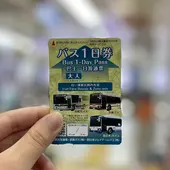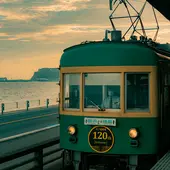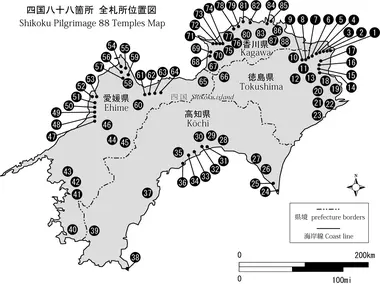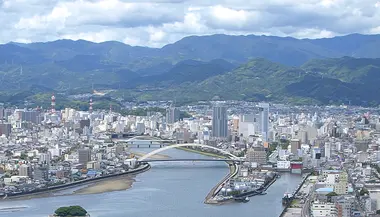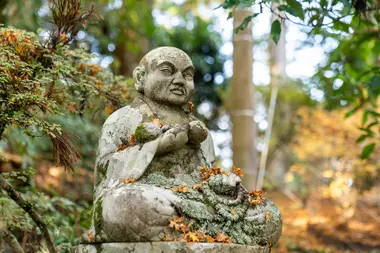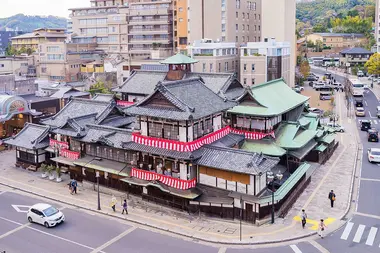Regional Rail Passes in Shikoku
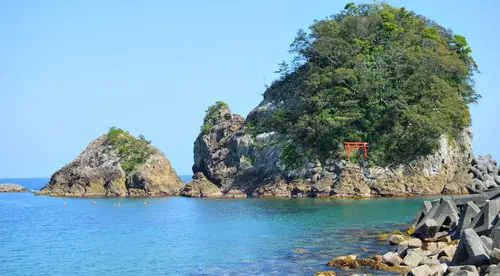
The name "Shikoku" translates directly to "four provinces" in reference to the four prefectures that make up the island. Nestled in the Seto Inland Sea, Shikoku Island is a true hidden gem of Japan, a beloved destination by residents of Japan traveling domestically. Between spiritual escapades, such as the region's famous 88 temple pilgrimage, and sublime natural panoramas, Shikoku is a must-visit for travelers to Japan.
Japan's best-kept secret
Shikoku is a major region Japan, that could be considered the country's best kept secret. The name "shikoku" itself can be translated as "the four nations," in reference to the four prefectures that make it up: Kochi, Kagawa, Tokushima, and Ehime. Amongst its most popular experiences, the 88 Temple Pilgrimage (known as the Shikoku Henro in Japanese) serves as one of the most spiritually driven journeys you can take upon visiting Japan. The All Shikoku Pass allows for easy access and navigation of this journey.
How to buy a Regional Pass to explore Shikoku
A pilgrimage like no other
For many, Shikoku is most renowned for the Henro Pilgrimage, a journey to 88 different Buddhist temples, traditionally on foot throughout the island. The pilgrimage is associated with the historic monk known as "Kukai," and pilgrims undergo the trek in commemoration of his own travels. As previously mentioned, this journey has historically been done on foot, but modern-day participants will often utilize cars, bikes, and other means of transportation. The most important thing is the travel itself, regardless of the means of movement. And for those who feel that all 88 temples is a bit of a tall task, endeavors that go to only parts of the journey are more than welcome.
The Four Provinces
Kochi Prefecture
Kochi Prefecture is a largely rural area, known for its natural scenery of mountains, plains, and coast. It's home to one of the most well-preserved feudal castles, Kochi Castle. For a charming shopping experience, the famous Sunday market has been going on for nearly centuries, evolving with the times. Along with food, artisanal goods are sold by vendors and craftsman. A place like Kochi serves as a pleasant escape from larger cities in Japan.
Kochi is particularly popular with those looking for adventures in the water, as it is home to several rivers. Kayaking is popular on both the prefecture's rivers and oceans. Diving and ferry rides are also fun adventures, and for those looking for more leisurely activities, a day whale and dolphin watching around the waters of Kochi is very popular, and fun for the whole family.
Kagawa Prefecture
Kagawa Prefecture, the smallest prefecture in Japan, is home to Shodoshima, an inlet island with an array of unique features to attract travelers from all over. It was the first area in Japan to successfully grow olives, and has thus been nicknamed "Olive Island." In fact, much of the fame of Shodoshima is due to its gastronomic contributions, also well-renowned for its famous soy sauce breweries. Just like much of Shikoku, the natural attractions of Shodoshima are a major draw, including the wild monkeys that call Shodoshima home.
In addition, Kagawa is considered a mecca for those with an appreciation for art. Naoshima Island, right off the coast of Takamatsu, boasts some of the most well-recognized art installations in the world and garners the attention of visitors from all over the world, often traveling to this area of Japan specifically to see what the island has on display. The most iconic of these installations is the spotted pumpkin, created by the equally iconic Yayoi Kusama.
Tokushima Prefecture
Tokushima prefecture is located in the eastern part of Shikoku and is linked to Honshu by a bridge. It's in this prefecture that the traditional Shikoku Henro begins with a visit to Ryozenji temple. In fact, over a quarter of the 88 Shikoku Henro temples are located in Tokushima, so those taking part in the pilgrimage become familiar with the area.
Although Tokushima is a smaller prefecture in terms of area, it hosts the biggest street festival in all of Japan, the Awa Odori dance festival, which takes place in August. Over 1 million people from the prefecture and other parts of Japan and the world attend and participate in this festival every year.
The Naruto region of Tokushima is home to a number of natural whirlpools, created when the Pacific Ocean meets the Seto Inland Sea. Observation boats take visitors out on the water for one of Japan's most unique natural experiences.
Ehime Prefecture
Finally, Ehime Prefecture is located on the part of Shikoku Island that lies just below Hiroshima. This prefecture is a paradise for outdoor enthusiasts. One of the most popular reasons to visit Ehime are its magnificent bicycle paths. The prefecture boasts almost 30 different cycling routes that visitors can take. It's an interesting and active alternative to travelling by bus or train (although all these routes are accessible, if necessary, via the All Shikoku Pass).
The city of Matsuyama, capital of Ehime Prefecture, is a beautiful blend of modern and traditional. The town is home to the famous Matsuyama Castle, which is particularly beautiful in springtime. From here, visitors to Matsuyama often stop off at the famous and historic Dogo Onsen, considered to be the oldest hot spring in all of Japan. Visitors to the onsen can take advantage of their free time in the baths to rest and relax.
Why book a regional pass with Japan Experience?
Why get a regional pass?
Those visiting Japan have undoubtedly heard about the rail pass options available for traveling around Japan via train. As opposed to getting individual tickets, regional and Japan Rail Pass options allow for unlimited rides on certain train lines, removing the need for strict itineraries and planning and oftentimes saving holders money on their commuting expenses. The most wide-ranging and popular option for these passes is the National Japan Rail Pass, which allows for unlimited rides on Japan Railway-operated train lines throughout the country. This includes high-speed Shinkansen bullet trains as well as many express trains and local lines within cities.
However, for those who are concentrating their travels primarily in one region or location, regional pass options also offer great value and convenience! Many of these regional passes operate in the same way as the National Japan Rail Pass, however, they incorporate public transportation options in a designated area. There are regional passes for many locations throughout Japan, such as Kansai, Hakone, Kyushu, Shikoku, Tohoku, and more! Depending on your itinerary and what you plan to see, a regional pass may be best for you, for stress-free, all-encompassing transit to and throughout your favorite destinations in Japan!
Frequently Asked Questions about Regional Rail Passes


